The British Army’s intelligence and drone capabilities are moving forward, with the Ministry of Defence confirming key milestones in its Land ISTAR (Intelligence, Surveillance, Target Acquisition and Reconnaissance) programme.
In a written parliamentary response, Minister of State Maria Eagle said the programme aims to “fuse data sources and ensure capacity for effective and faster decision-making,” with Project ZODIAC at its core.
ZODIAC’s Minimum Viable Product was delivered to 3 (UK) Division in 2024. The digital infrastructure will be put to the test during May’s Warfighter Exercise in the United States.
The system networks sensors to create a fused intelligence picture and automates data collection and analysis. It is intended to support faster command decisions in high-pressure battlefield environments.
Eagle also confirmed that the TIQUILA drone system, a new Uncrewed Air System for Brigade and Divisional operations, has reached Initial Operating Capability.
“TIQUILA is on schedule to reach Full Operating Capability by mid-2026, which will deliver a further 21 detachments that are fully integrated into the ZODIAC system,” she added.
TIQUILA’s hardware will also be upgraded to operate in GPS-denied environments, offering greater resilience and range through spiral development.
These updates position the Land ISTAR effort as a major step towards the Army’s digital transformation, with implications for future conflict readiness and NATO integration, here’s the update in full.
“The Land Intelligence, Surveillance, Target Acquisition and Reconnaissance (ISTAR) programme will deliver a suite of new sensor systems and enable a digitalised Army, by fusing data sources and ensuring capacity for effective and faster decision-making. At the core of the programme is project ZODIAC, which will provide the digital infrastructure required to network our sensors into a fused intelligence picture that is displayed across the network and automate our intelligence collection and analytical processes.
The ZODIAC Minimum Viable Product was delivered to 3 (UK) Division in 2024. Following a period of continuous development, enabled by the agile nature of the project, it will deliver the backbone of the Divisional ISTAR system for the forthcoming Warfighter Exercise in the US in May 2025.
The TIQUILA project will provide a new Uncrewed Air System (UAS) to support Brigade and Divisional Operations. It has now achieved its Initial Operating Capability, delivering three trained and equipped detachments into the Joint Aviation Command (JAC). TIQUILA is on schedule to reach Full Operating Capability by mid-2026, which will deliver a further 21 detachments that are fully integrated into the ZODIAC system.
Under TIQUILA’s spiral upgrade programme, platforms will be fitted with resilient hardware and Long-Range Antennas, enabling them to operate in Global Navigation Satellite Systems-denied environments with greater reach.”


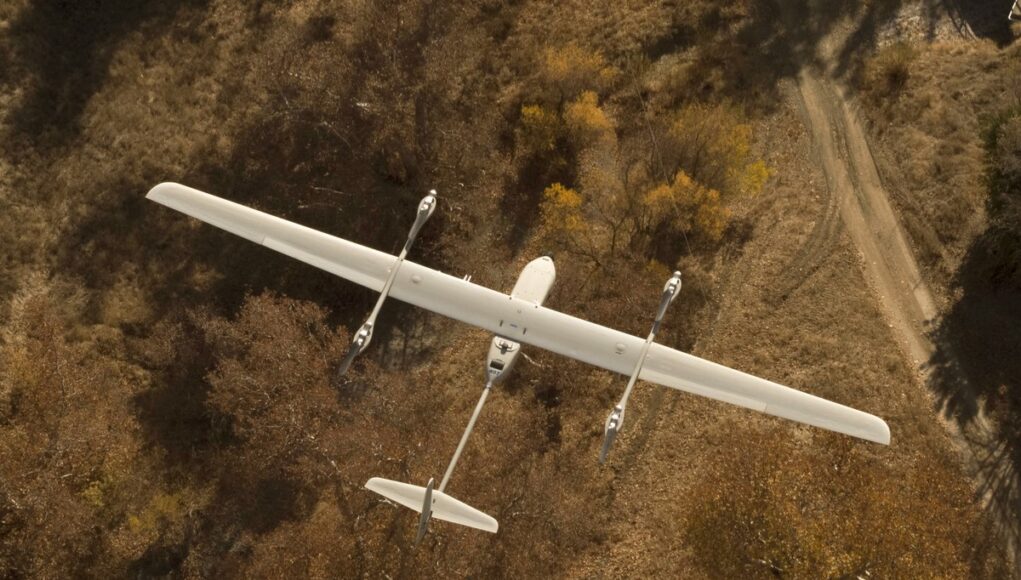
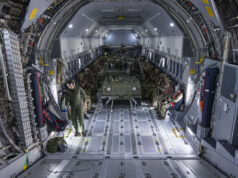



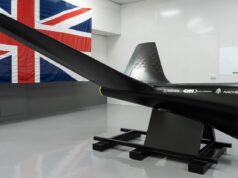


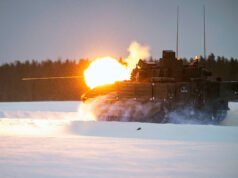

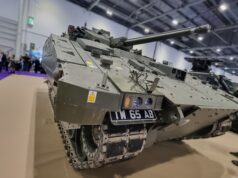

Sometimes these things need translation, because the project names are so many it’s hard to remember what is what.
Project Asgard is the initiative designed to provide the UK with enhanced decision support and operational execution across land, air, and maritime domains. It’s divided into three main areas, or ‘tents’, which include “Effectors,” “Digital Innovation,” and “Enhanced C4 ISTAR & Networks.” (So, recon, C2 and strike.)
Within it, Project Zodiac is the Digital Backbone of the land component. Tiquila is the ISTAR component for both the Army and Stratcom. So the Tequila drones hook into the Zodiac infrastructure.
Sometimes these things need translation, because the project names are so many it’s hard to remember what is what.
Project Asgard is the initiative designed to provide the UK with enhanced decision support and operational execution across land, air, and maritime domains. It’s divided into three main areas, or ‘tents’, which include “Effectors,” “Digital Innovation,” and “Enhanced C4 ISTAR & Networks.” (So, recon, C2 and strike.)
Within it, Project Zodiac is the Digital Backbone of the land component. Tiquila is the ISTAR component for both the Army and Stratcom. So the Tequila drones hook into the Zodiac infrastructure.
I get confused by these mini.statements about UAVs.
As I understand it, Project Zodiac is the umbrella term for all the Land ISTAR drone programmes to equip the army. (There are othe programmes for the RN and the RAF is getting its MQ9b Protectors).
The army seems to have 3 such programmes. Under the Tiquila heading, there are
a) 159 Indigo 4 rotary wing backpack drones, for platoon or section use, with an 8 mile range
b) 105 Stalker VXE30 fixed wing drones, with a 60 mile range and 8 hours endurance. Don’t know if this is intended to be a battalion fire support weapon or a gunners’ bde-level one.
Both of these are being supplied by LM UK, with an ISD of end 2026.
c) This new drone that the article talks about, which sounds like the full ISTAR replacement for Watchkeeper. Expect it is a medium altitude, long-endurance (MALE) drone and will equip an artillery regt, probably as part of the Div Aviation bde. It sounds like it’s being led by Roke, a UK company, but with lots of others supplying elements of the thing.
Is that all broadly right or do others have more accurate info? It sounds like unusually swift progress, which is great, as long as these new devices work as planned.
I’m broadly in the same area as you mate, not studied it too closely yet.
Army had one MALE UAS, and one TUAS Regiment, with a third Army Reserve Reg supporting the other two.
I don’t see that changing?
I fully expect the Watchkeeper replacement to be just as vulnerable as what it replaces, ironic considering that was one excuse for it’s demise.
I am slightly confused on the Watchkeeper’s drone’s replacement requirements. One thing that has not been mentioned is “stealth”. Being able to operate over a hostile environment is one thing. But what defines a hostile environment? The US’s MQ-9s and their rather more expensive RQ-4 Global Hawk have been shot down by Houthis surface to air missiles when operating over the Red Sea area of operations. But having a Medium Altitude Long Endurance (MALE) operating over a Ukraine-Russia type of conflict, it will not last long! look at what happened to Ukraine’s TB4 drones, after Russia finally figured out how to detect and deal with them. Simply due to the higher number and more modern air defence systems a MALE drone won’t last long and will have to operate a long way back from the front line. However, if it has to operate 100km back from the main area of conflict, it won’t be able to provide the necessary targeting information.
Perhaps what the Army needs is a smaller (cheaper) attritable drone, that can provide the necessary surveillance and targeting information. But is easily replaceable for not a great cost, rather as per usual a Gold plated solution.
Not sure what happened to my previous comment?
My thoughts are the Army are asking for a Gold plated solution, yet again! Experience from the Red Sea operations and the war in Ukraine has shown that medium altitude long endurance (MALE) types of UAVs have a very short shelf life when any form of air defences are being used by the enemy. For example the US has lost upwards of 19 MQ-9s plus a RQ-4 Global Hawk “monitoring” Houthis activities, whilst Ukraine hardly ever flies TB4s anymore. As Russia finally caught up and managed to detect, track and then shoot down the TB4s with its Buk and Pantsir systems. Therefore, to mind the Watchkeeper replacement will only be suited to areas that don’t have any short range air defences (SHORAD). Otherwise it will have to operate way behind friendly lines. Which for a spotter for the Royal Artillery is pretty pointless!
You could make the UAV pretty stealthy, which would allow it operate closer to enemy forces with SHORAD, but that drives up cost significantly. Perhaps there is another option? Which is through the use of cheaper attritable drones. Where they have some of the capabilities, i.e. focusing on surveillance via a thermal electro-optical camera. Where if they are shot down or lost to electronic warfare (EW), they can quickly be replaced.
Perhaps a MALE UAV could be useful operating behind friendly lines (safer), where it is used as a communications node. Linking the feeds from the cheaper drones to a command vehicle, HQ etc.
I have comments from several days ago still in limbo.
They’re being moderated and it takes time.
With the ever increasing capability of recce, targeting and sensor systems, do we really need to operate large expensive UAVs close to the front line? Artillery targeting can be done using high altitude UAVS which operate outside the range of enemy SHORERAD. Essential short-range recce and targeting should be achieved using ‘disposable’ low-cost UAVs. Why make life difficult?